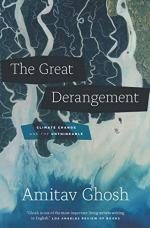
|
| Name: _________________________ | Period: ___________________ |
This quiz consists of 5 multiple choice and 5 short answer questions through Part II, Section 5 - Part III, Section 2.
Multiple Choice Questions
1. Who wrote of the genres of science fiction and speculative fiction that they "all draw from the same deep well: those imagined other worlds located somewhere apart from our everyday one..." (72)?
(a) Ian Hacking.
(b) Margaret Atwood.
(c) Stanislaw Lem.
(d) Ernest Gellner.
2. What was the first year that the Arabian Sea was known to have generated more storms than the Bay of Bengal?
(a) 2001.
(b) 2015.
(c) 2011.
(d) 2019.
3. When did Cyclone Storm Chapala hit the shores of Yemen?
(a) September 6, 2014.
(b) June 4, 2011.
(c) May 6, 2017.
(d) November 3, 2015.
4. The author states in Part II, Section 2, "In China, which feeds more than 20 percent of the world's population off 7 percent of the world's arable land, desertification is already causing direct annual losses of" how much (89)?
(a) $25 billion.
(b) $45 billion.
(c) $75 billion.
(d) $65 billion.
5. Who wrote Madame Bovary?
(a) Bankim Chandra Chatterjee.
(b) Stephen Jay Gould.
(c) Stanislaw Lem.
(d) Gustave Flaubert.
Short Answer Questions
1. When was the Treaty of Nanking signed on the Cornwallis?
2. The author states in Part 1, Section 10 that the city of Mumbai's health infrastructure was intended to cater to a population what times its size?
3. What neighborhoods of Long Island does the author describe looking out of on a flight into J.F.K. and thinking they were sure to be swamped in a storm surge in Part 1, Section 9?
4. What was the author doing as a part-time job while earning his MA at Delhi University?
5. In what novel by the author does he describe a character experiencing the crossing of the Enterprise?
|
This section contains 279 words (approx. 1 page at 300 words per page) |

|




